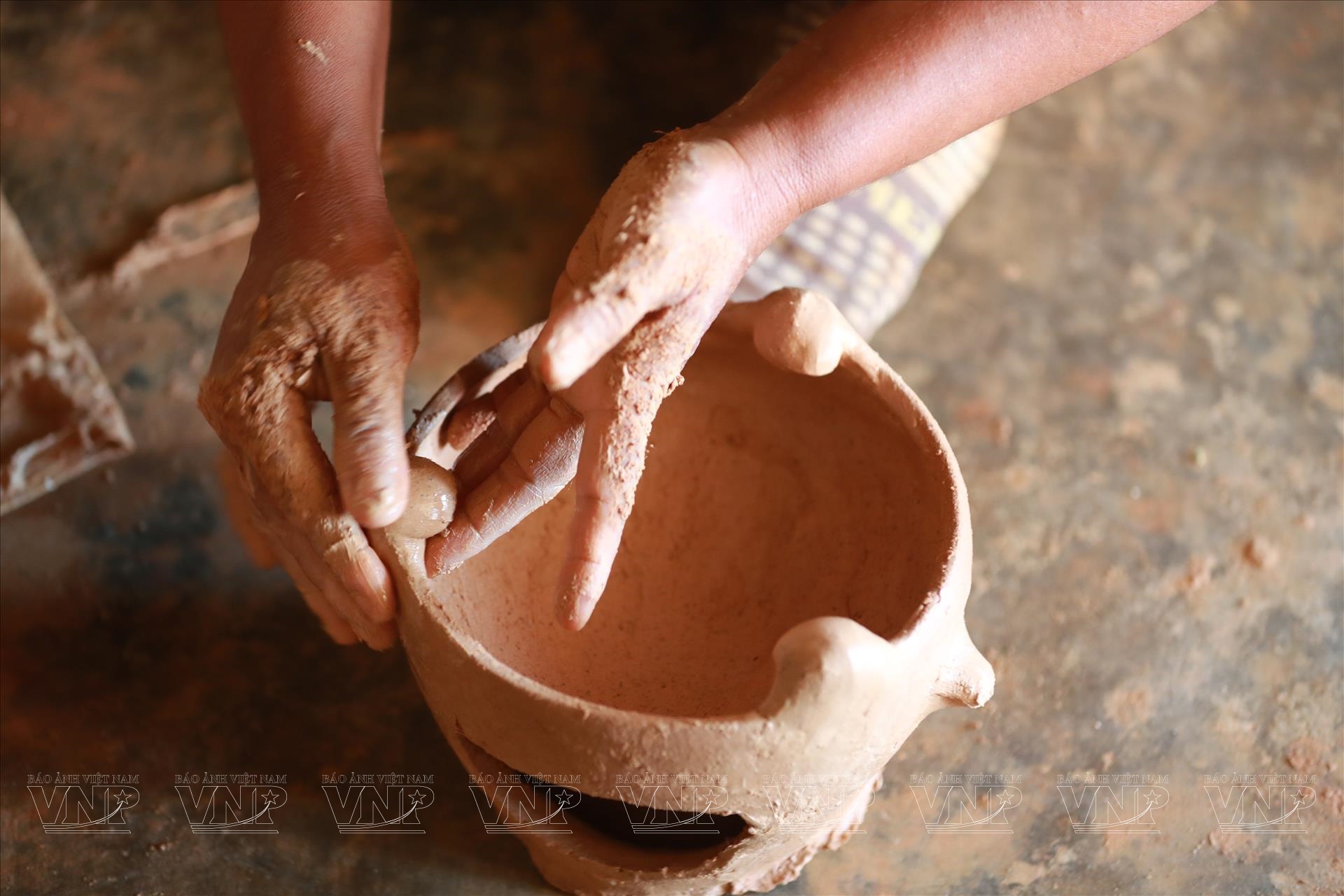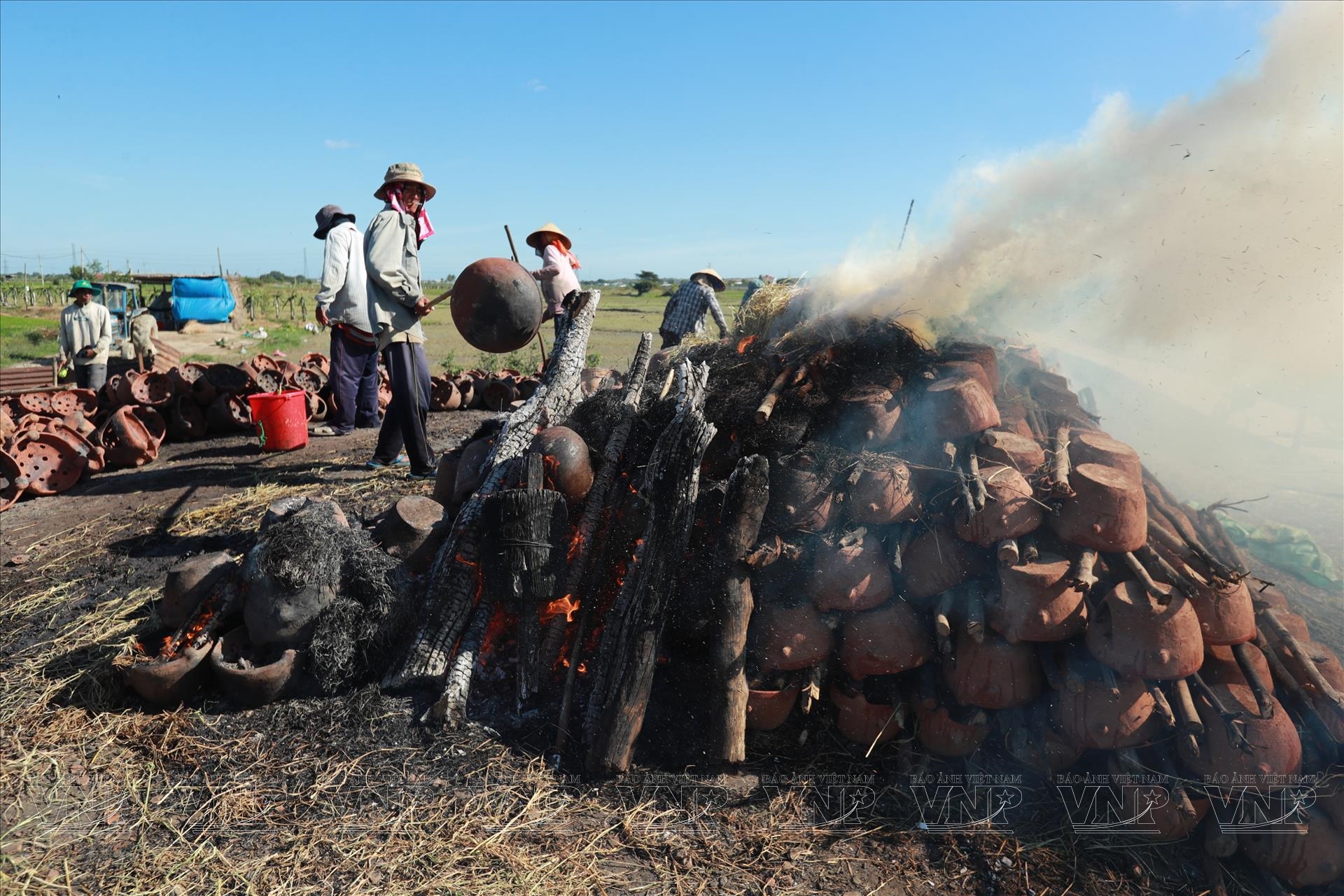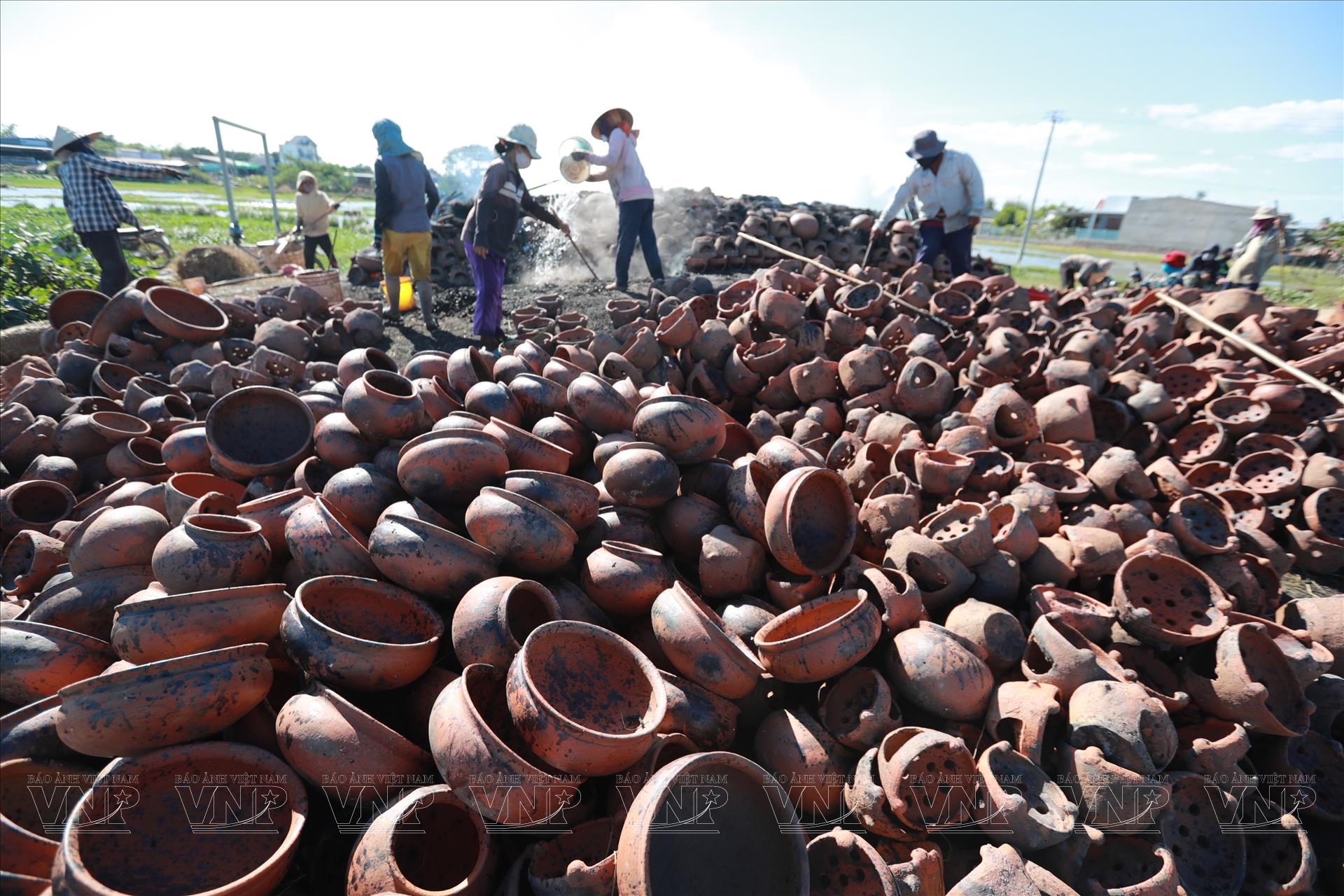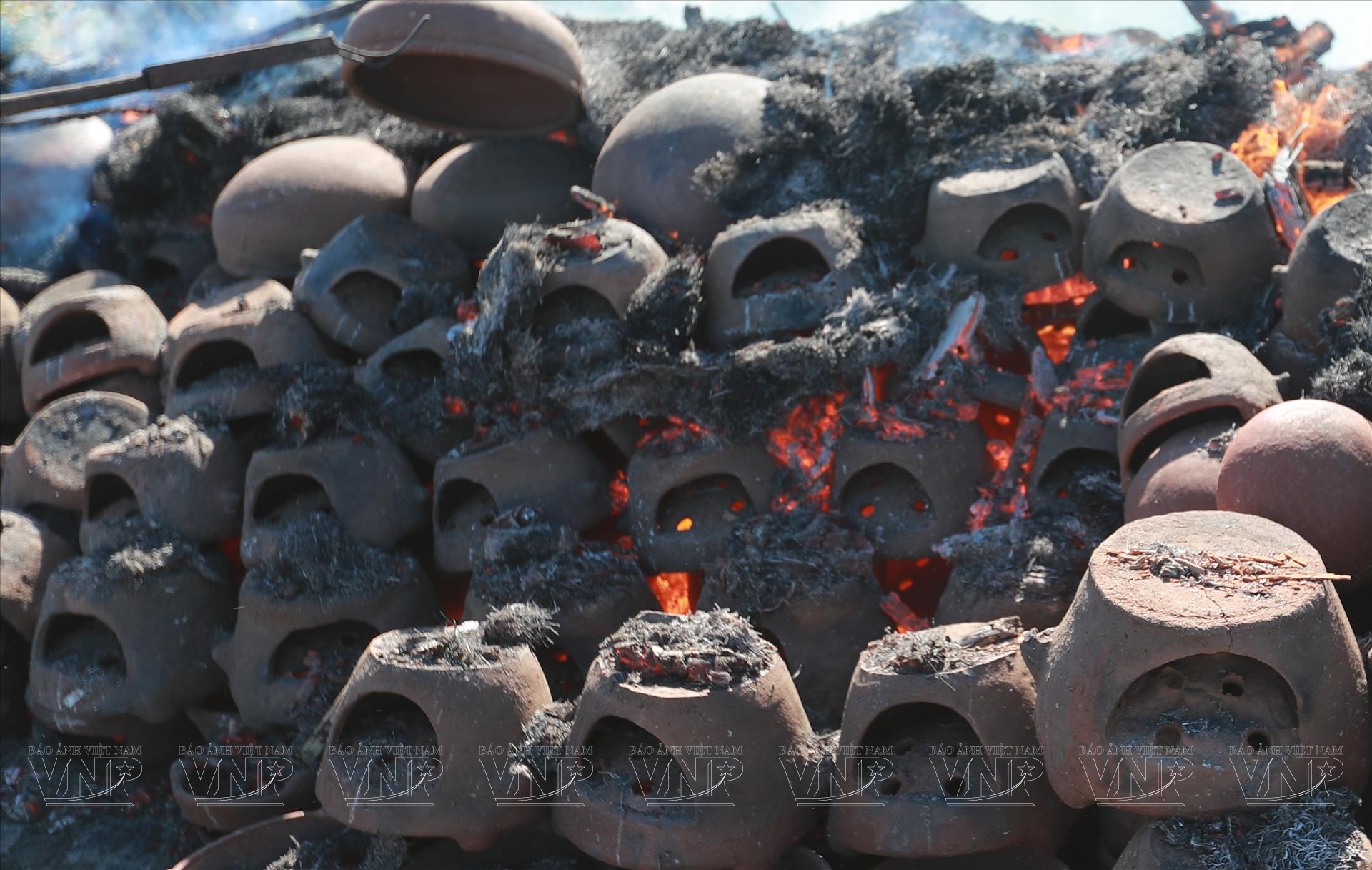Binh Duc pottery village

Binh Duc pottery village or Go pottery village of the Cham is well known in the south of Vietnam for its gorgeous handicrafts made from a special clay.
Located in Phan Hiep commune, Bac Binh district, Binh Thuan province, the village has become a destination for visitors to experience traditional pottery making.
Currently, there are 26 Cham villages in Binh Thuan province, but only the people in Binh Duc village still make pottery using the traditional techniques and processes of their ancestors.
According to locals, the craft has a long history that has been handed down from generation to generation. They take clay from the Phan river and use the original methods of the Cham to make pottery items. The craftsmen use a rotating table for shaping each product.
The way to heat pottery in Binh Duc is also more special than other places. After the shaping stage, the fixed products are taken to the front-yard to dry under the sun. The next day, the pottery products are arranged carefully to be fired. The locals use straw and coconut leaves for firing. The time depends on the size of the product.
To create special patterns on new pottery products, the craftsmen sprinkle a special liquid on the surface which is made from sandbox fruit and golden-apples. That is why Binh Duc pottery items have the light red color with special and natural patterns, making them distinctive from the items made by other villages.
Binh Duc villagers focus on making household utensils such as pots, flower vases and oven and cooking tools which are in demand in the markets of Ho Chi Minh City, Phan Thien and Binh Duong provinces.
Craftswoman Nguyen Thi Minh in Binh Duc village said that making pottery is less hard work and brings in a higher income than farming. Her family can earn 10-15 million dong (about 435-653 US dollars) from the pottery kiln every month.
There are 40 households engaged in making pottery in Binh Duc village. The number will increase following a policy to expand the craft village of Binh Thuan province. Although the younger generation has jobs with high incomes in companies and factories, the profession is passed on to one member in each family to maintain the cultural traits and pass it on to the next generation.
a special liquid on the surface which is made from sandbox fruit and golden-apples.
By Nguyen Tuoi






